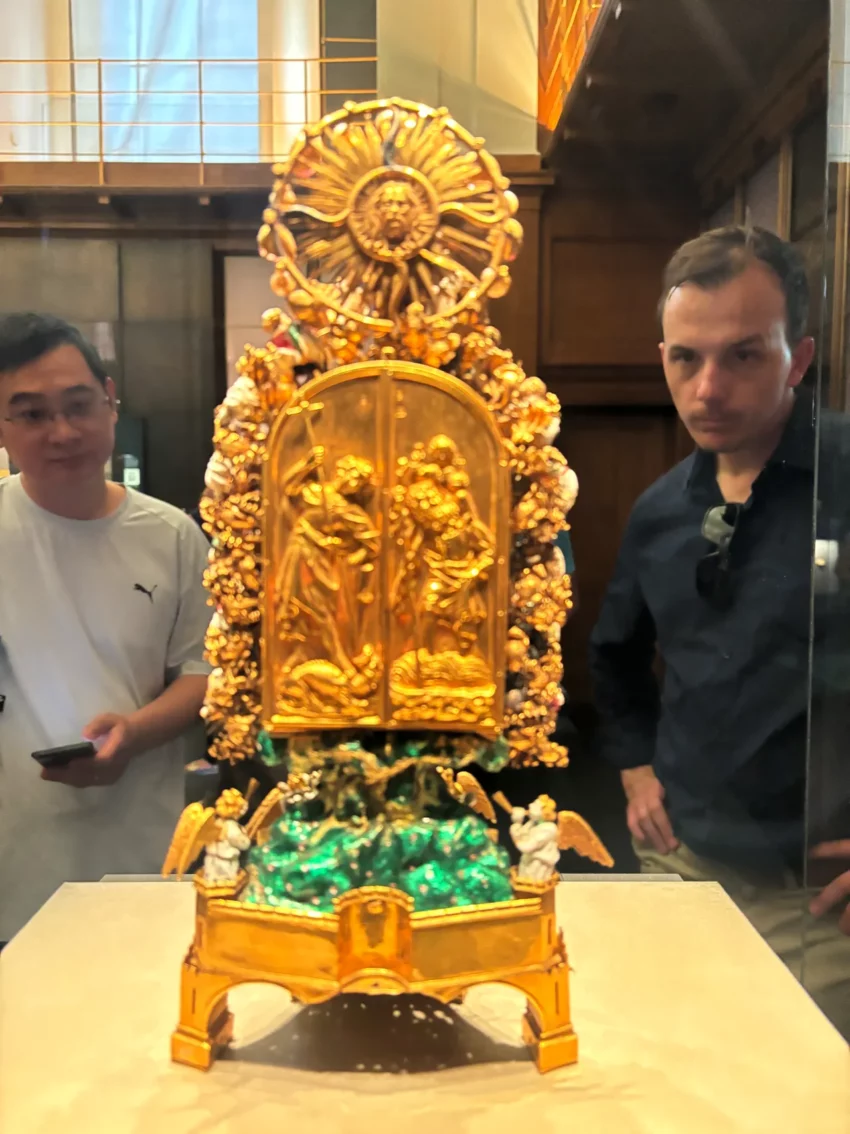The Holy Thorn Reliquary: A Masterpiece of Medieval Art
The Holy Thorn Reliquary, likely crafted in Paris during the 1390s, holds a relic believed to be a thorn from the Crown of Thorns worn by Jesus. John, Duke of Berry, commissioned this remarkable piece. Ferdinand de Rothschild bequeathed it to the British Museum in 1898, where it remains a highlight of their collection.
Get your dose of History via Email
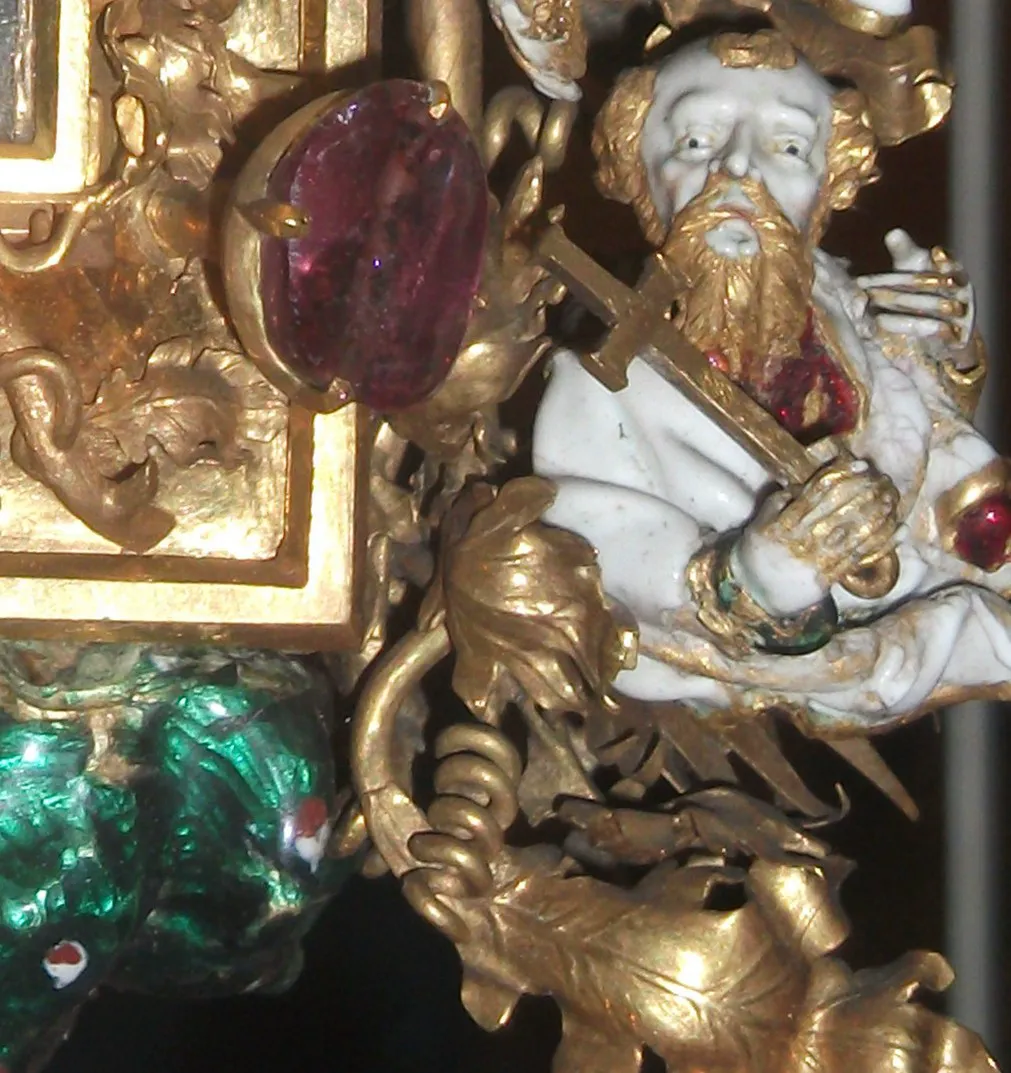
An Extravagant Masterpiece
This reliquary stands out as one of the few surviving joyaux from the lavish Valois royal courts. Crafted from gold and adorned with jewels and pearls, it employs the recently developed enamelling technique known as en ronde bosse, or “in the round.” This technique enabled the creation of 28 intricate three-dimensional figures, mostly in white enamel, that decorate the reliquary.
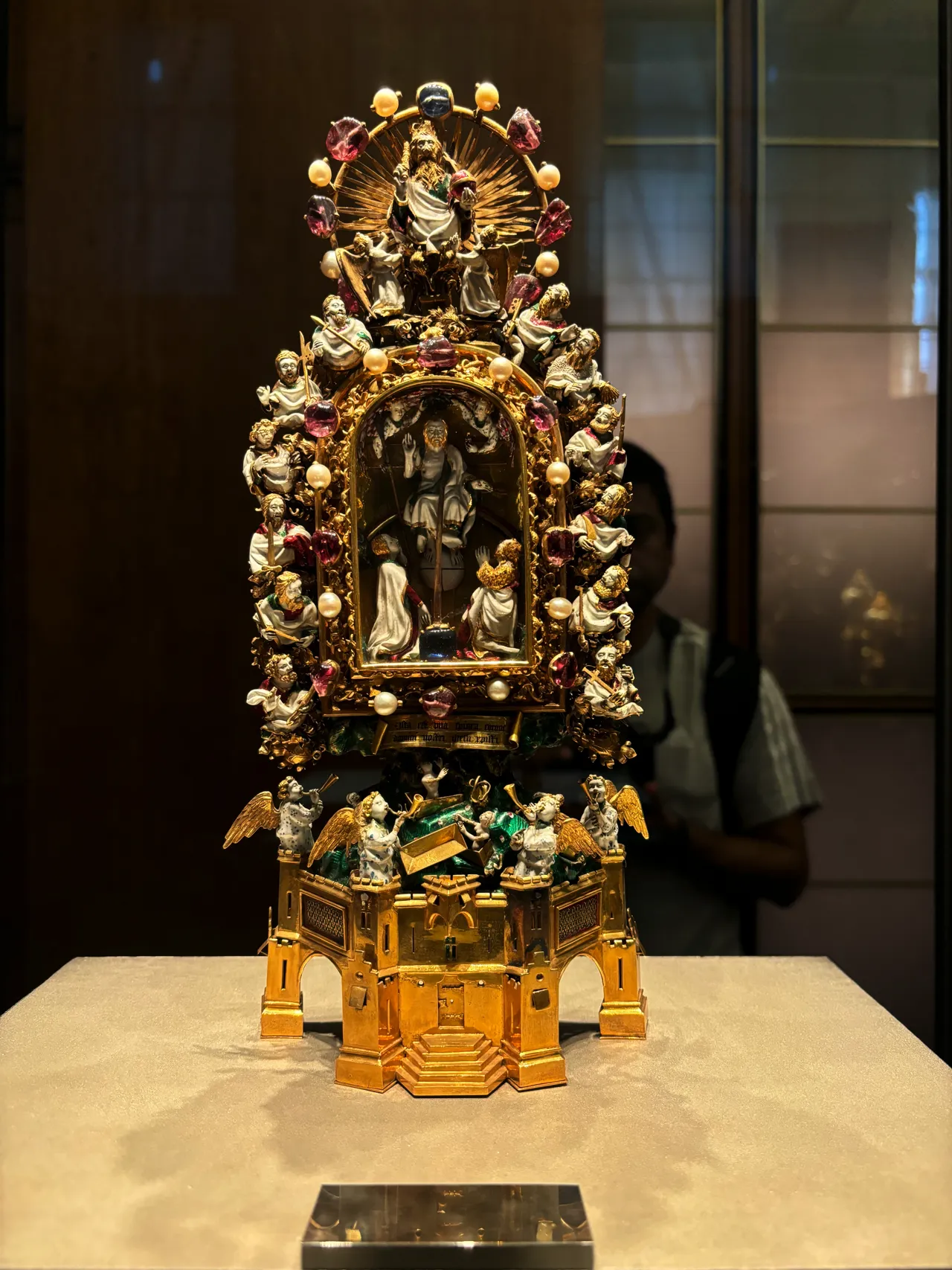
Dual Faces of the Reliquary
The front of the reliquary vividly depicts the Last Judgement and the resurrection of the dead. It features the Trinity and saints above, with resurrected figures below. A single thorn, believed to be from Jesus’ Crown of Thorns, takes center stage. The rear of the reliquary is simpler, crafted mostly in plain gold with low-relief decorations. This side originally displayed a flat object, now missing, which was likely another relic.
A Tale of Intrigue and Forgery
The reliquary’s journey is as fascinating as its craftsmanship. It resided in the Habsburg collections from the 16th century until the 1860s. During a restoration by art dealer Salomon Weininger, a forgery replaced it. The original remained undiscovered until it reached the British Museum. This piece featured in the BBC’s “A History of the World in 100 Objects,” where Neil MacGregor hailed it as a supreme achievement of medieval European metalwork.
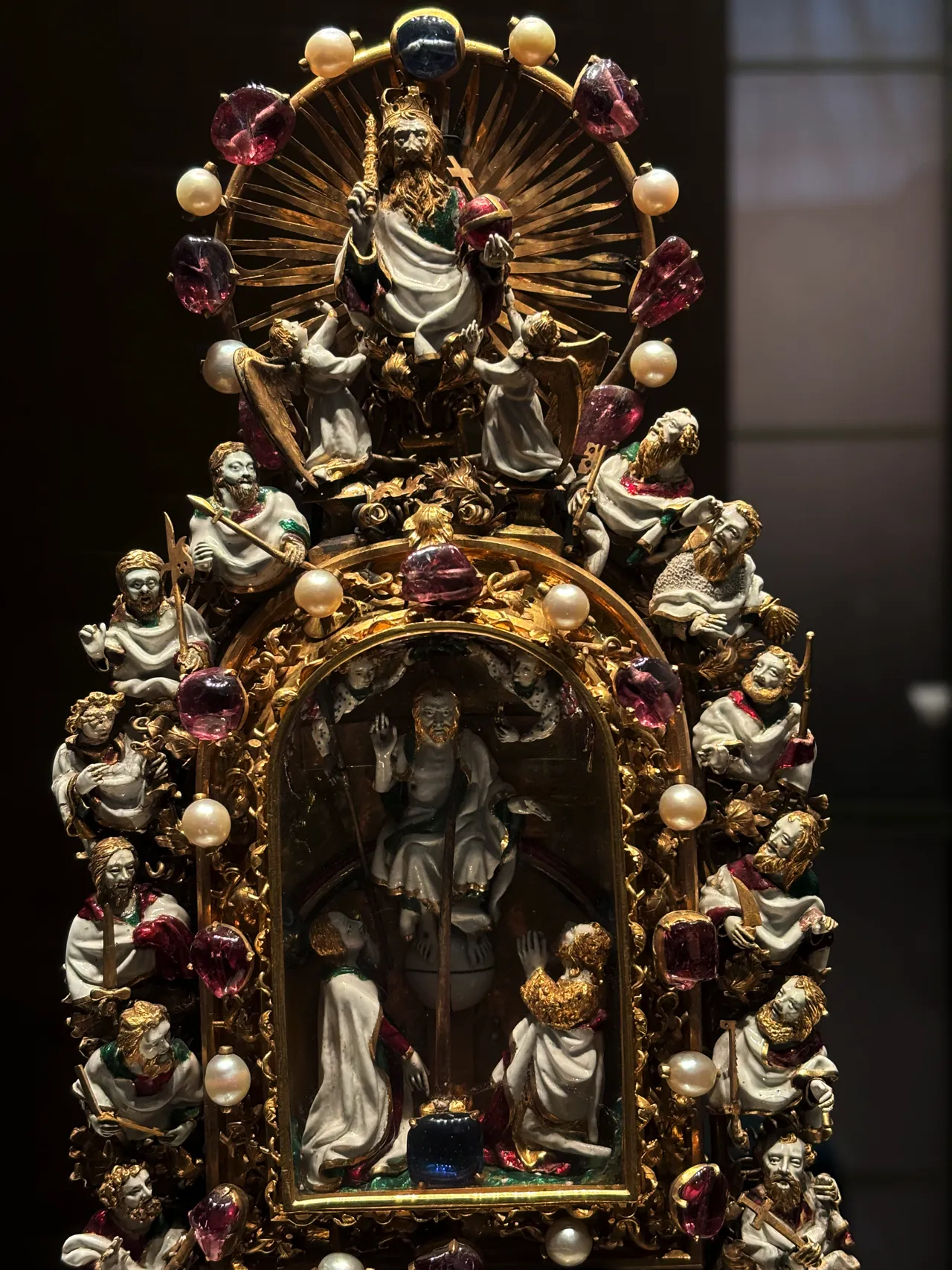
Historical Context
King Louis IX of France purchased the authentic Crown of Thorns in 1239. Subsequent French kings distributed individual thorns as gifts. John, Duke of Berry, commissioned the Holy Thorn Reliquary a few years before his famous Très Riches Heures. Initially thought to date between 1401 and 1410, recent evidence places its creation between 1390 and 1397.
From Vienna to Waddesdon Manor
Its whereabouts remained unknown until an inventory in 1544 listed it as belonging to Holy Roman Emperor Charles V. It likely passed through the Austrian Habsburg line, appearing in several Imperial Schatzkammer inventories from 1677. The reliquary stayed in Vienna until the 1860s, when it was sent for restoration. Weininger secretly replaced it with a copy, and the original was sold to the Rothschild family by 1872.
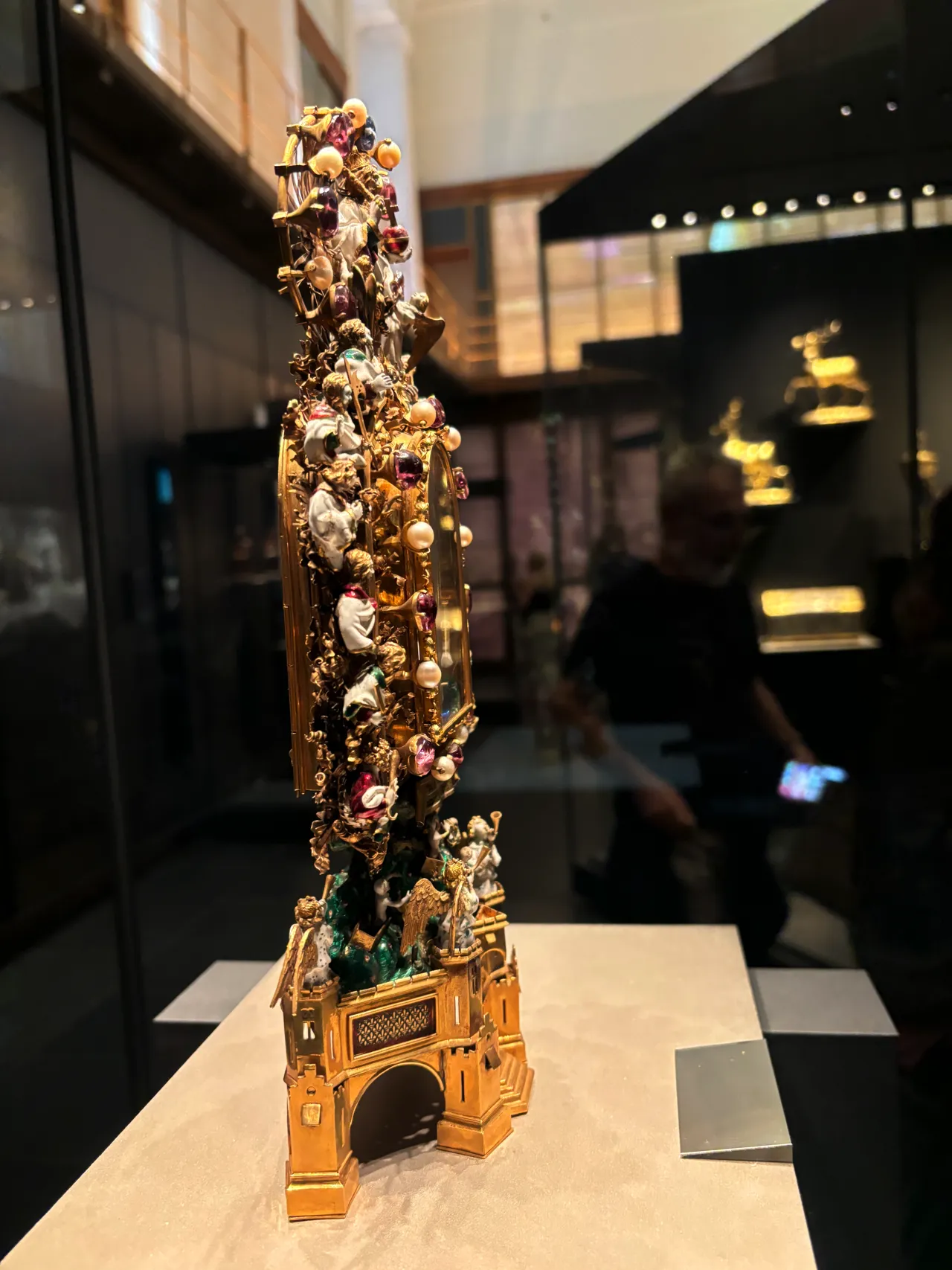
The British Museum’s Treasure
The British Museum received the original reliquary as part of the Waddesdon Bequest in 1899. Its origins were initially misunderstood, described as “Spanish, 16th Century.” Scholars reconstructed its history, and by 1959, experts confirmed it as the original, comparing it with the Viennese copy.
Artistic and Religious Significance
The Holy Thorn Reliquary stands 30 centimeters high, made of gold, enamel, rock crystal, pearls, rubies, and sapphires. It features exquisite ronde bosse enamelling, with white as the dominant color. The front showcases a detailed scene of the Last Judgement, with God the Father, Christ in Judgment, and apostles. A sapphire-mounted thorn takes prominence. The rear displays Saint Michael and Saint Christopher in gold relief, with an empty compartment likely meant for another relic.
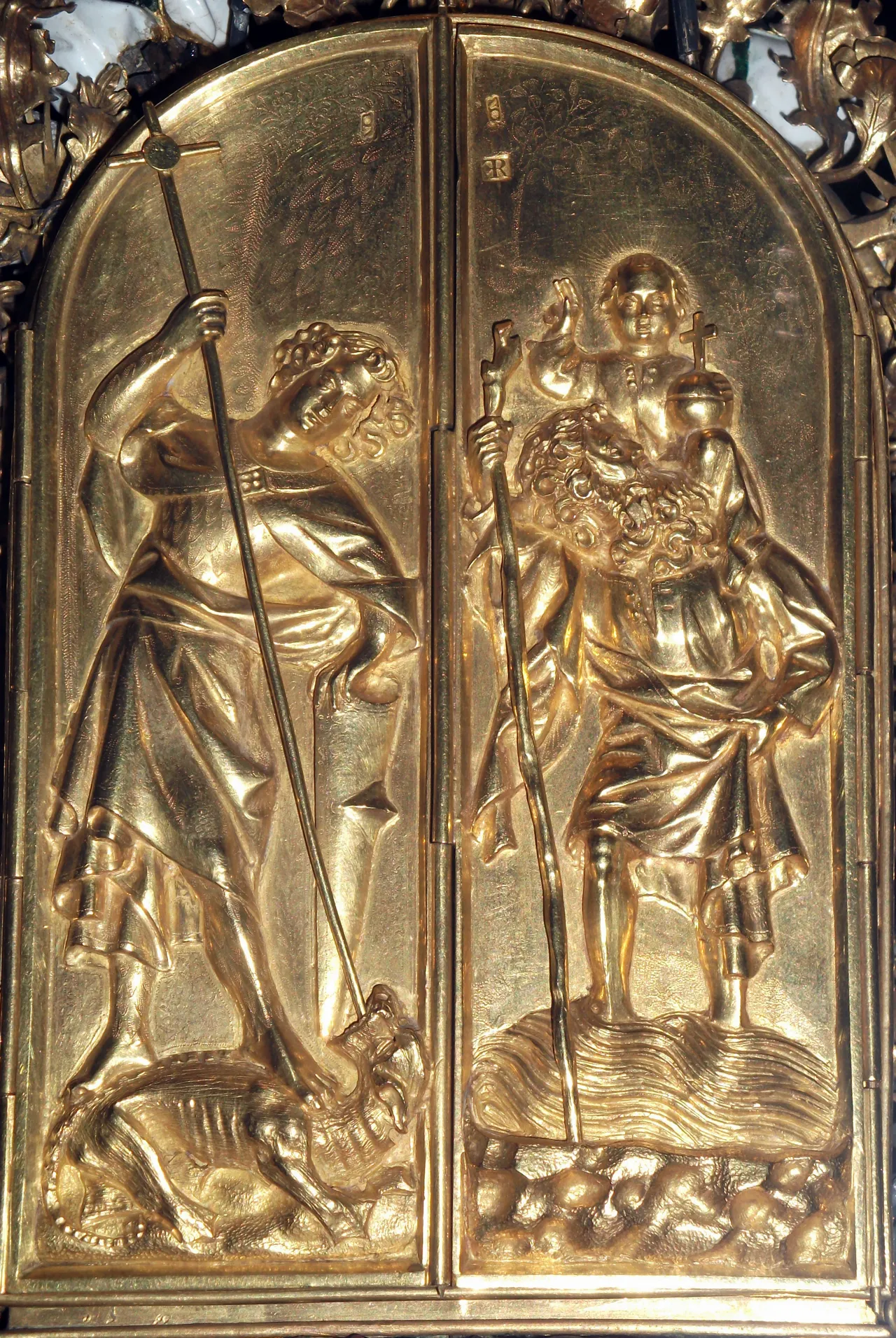
An Unmatched Craftsmanship
The reliquary’s maker remains unknown, as goldsmiths of the period rarely signed their work. Paris was the center of production for such elaborate pieces. The technique of ronde bosse enamelling was a recent innovation, with white enamel being particularly fashionable. The reliquary’s craftsmanship demonstrates a high degree of skill, with detailed chasing and stippled work.
The Duke of Berry: A Patron of the Arts
John, Duke of Berry, a notable art patron, commissioned numerous works in gold and silver. Despite detailed inventories of his possessions, the reliquary’s specific mention is absent. After his death in 1416, most of his treasures were seized and melted down by the English. The Holy Thorn Reliquary likely survived due to its religious significance.
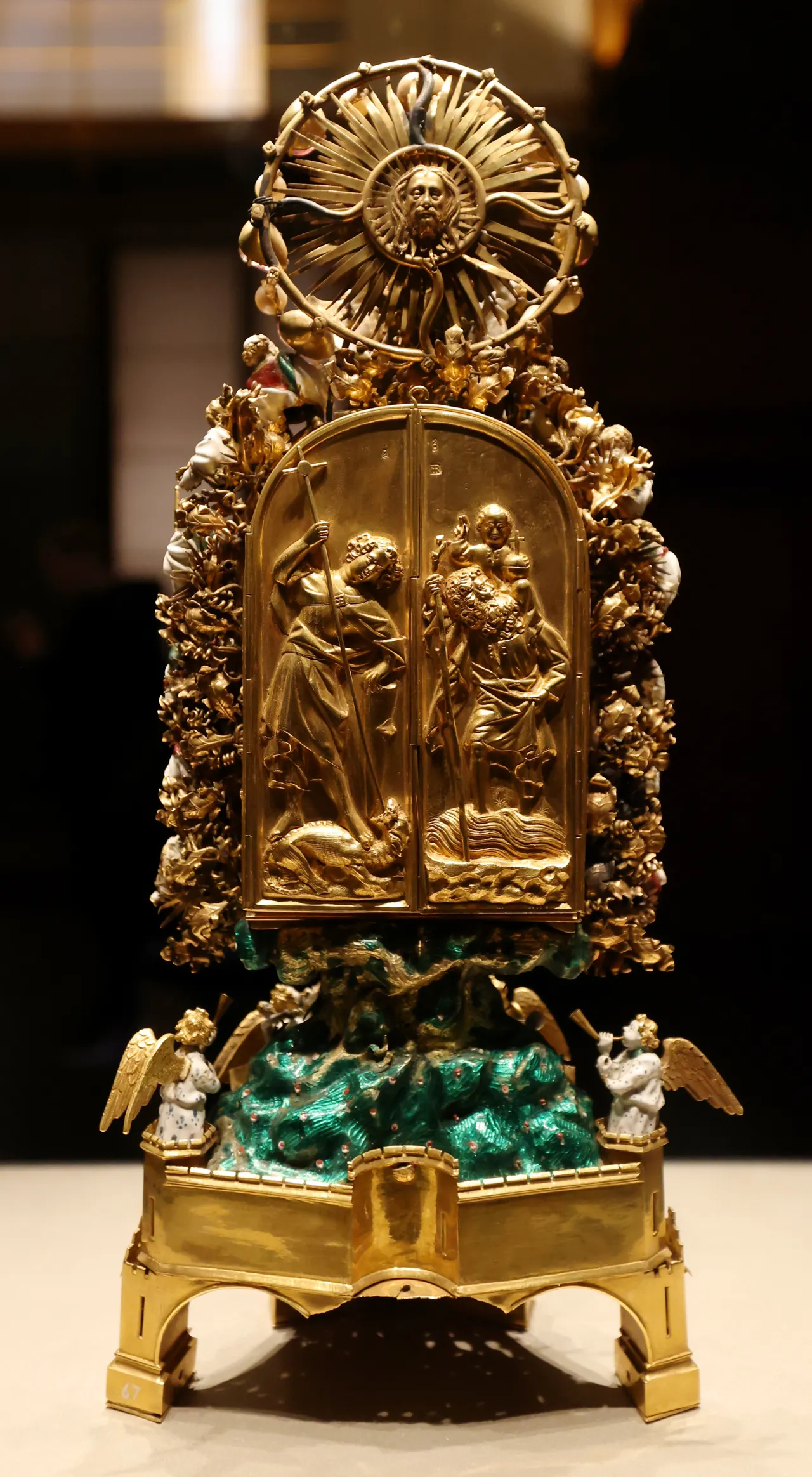
A Relic with a Storied Past
The reliquary likely housed a thorn from the Crown of Thorns, acquired by Louis IX in 1239. John, Duke of Berry, valued relics and commissioned this piece to house the thorn. It may have traveled with him or been kept in a chapel, reflecting his devotion and the relic’s significance.
The Holy Thorn Reliquary remains a testament to medieval craftsmanship and the enduring allure of religious relics. Its intricate design and rich history continue to captivate viewers and scholars alike.
Sources:

